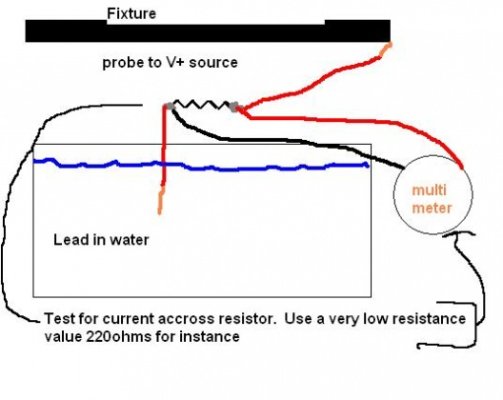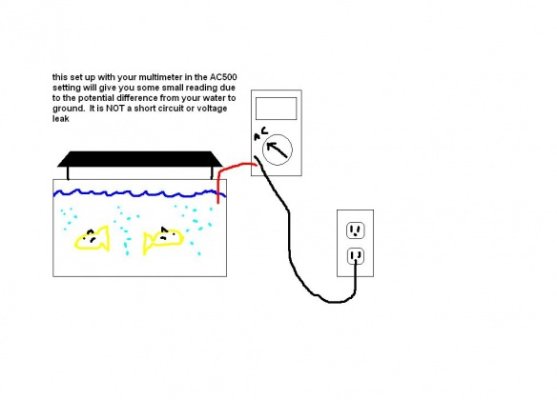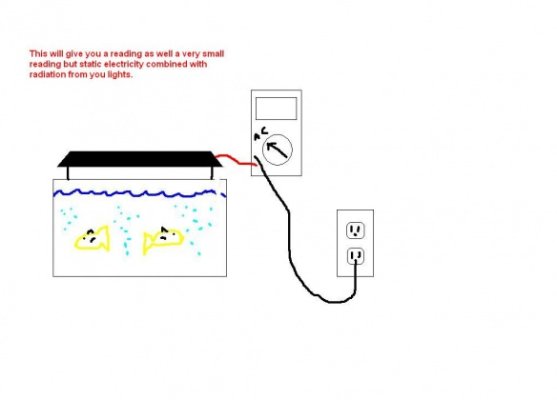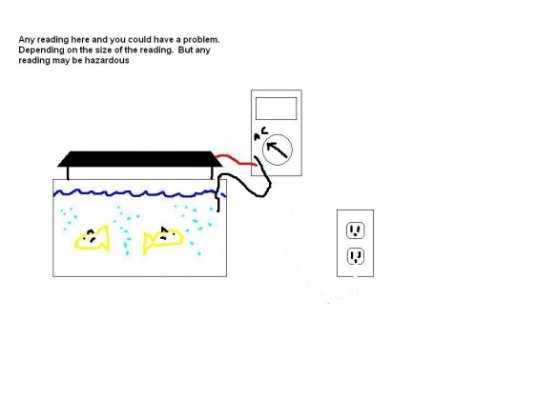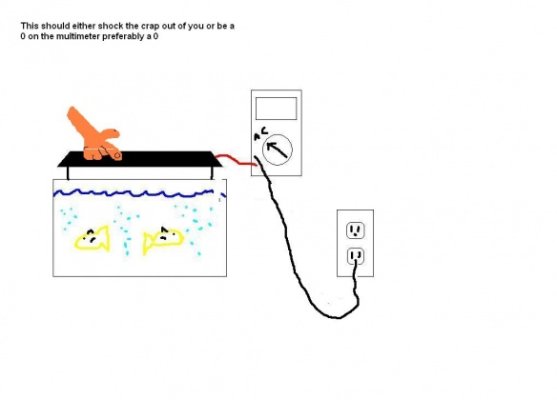Just a different perspective: My heater broke in my FW tank a while back, and I could feel a tingle when touching the light (light is grounded). <I measured 110 V between the tank water & the canopy/ground!> Since mine is FW, it is more of an insulator so less current will flow through me, so I just felt a tingle. In a SW setup I would expect a h*** of a shock!
If you are measuring a voltage differential between the light canopy & ground, I would surmise that the canopy itself is not grounded. Perhaps there is some salt on one of the endcaps that is completing a circuit to the canopy when it touches some salt water at the tank rim? At 20V AC, you might not feel much if it is low current.
My suggestion is that instead of measuring current leaks as a safety check, just assume that there will be high risk of shorts when mixing electricity & SW & act accordingly. Replace the recepticle with a GFI unit. It will cut out the electricity if there is any current (a fraction of a milliamp) between the hot/neutral & ground, protecting you & your fishies. <For the GFI to be most effective, all your electricals should be grounded, some also ground the tank itself.> Ever since my heater incident, all my tanks are plugged into GFI units.

